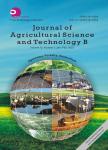Determination of Epibionts of the Marine Turtle Lepidochelys Ofivacea (Eschscholtz, 1829) Nesting in Ceuta Beach, Sinaloa, Mexico
Determination of Epibionts of the Marine Turtle Lepidochelys Ofivacea (Eschscholtz, 1829) Nesting in Ceuta Beach, Sinaloa, Mexico作者机构:Escuela de Biologla Universidad Autdenoma de Sinaloa Culiacfn Rosales Sinaloa CP 80030 Mexico Facultad de Ciencias del Mar Universidad Autenoma de Sinaloa. Mazatl6n Sinaloa Mexico
出 版 物:《Journal of Agricultural Science and Technology(B)》 (农业科学与技术(B))
年 卷 期:2012年第2卷第11期
页 面:1190-1194页
学科分类:0710[理学-生物学] 07[理学] 08[工学] 0802[工学-机械工程] 0835[工学-软件工程] 071002[理学-动物学] 080201[工学-机械制造及其自动化]
主 题:Epibiont Ceuta Lepidochelys olivacea turtles.
摘 要:Epibionts are floristic and faunistic benthonic organisms living attached to the skin of another animal; this phenomenon is well known as epibiosis and has been documented for all species of marine turtles. The interaction between the turtle and epibiotic organisms is to provide substrate for the epibionts communities, their presence are based mainly in the shell and in other anatomical structures in lower intensity. It has been registered that some epibionts affect growth, and can cause diverse damage in anatomical structures like the eyes, mouth, and limbs. They are usually vectors of disease. For such reasons the objective of the present work is to determinate the epibionts species associated with the marine turtle Lepidochelys olivacea in Ceuta beach, Sinaloa, Mexico. During the nesting season May-December of 2008-2009, the female turtles nesting and strandings were monitored and epibionts were collected. Eleven species distributed in the following taxa were obtained: fishes of the family Echeneidae, Hirudineos (Ozobranchus branchiatus, Ozobranchus margoi), Arthropods (Chelonibia testudinaria, Lepas sp., Conchoderma virgatum) and the first registry of Stephanolepas muricata for Lepidochelys olivacea. According to the records from Ceuta Beach the species of epibionts are still being registered with the exception of Ozobranchus margoi, and Stephanolepas muricata, thus, suggesting further research on epibiont organisms.



